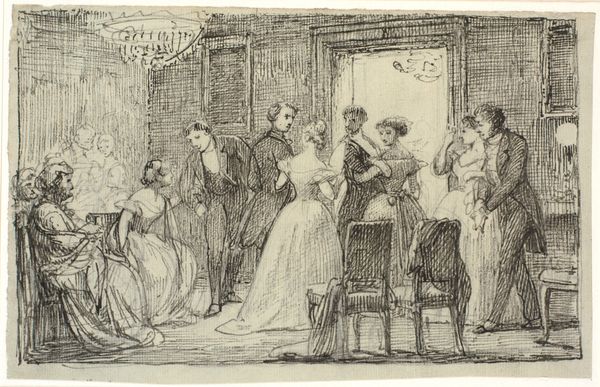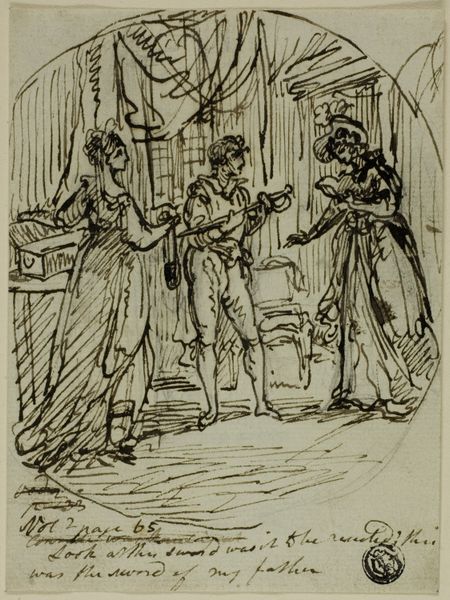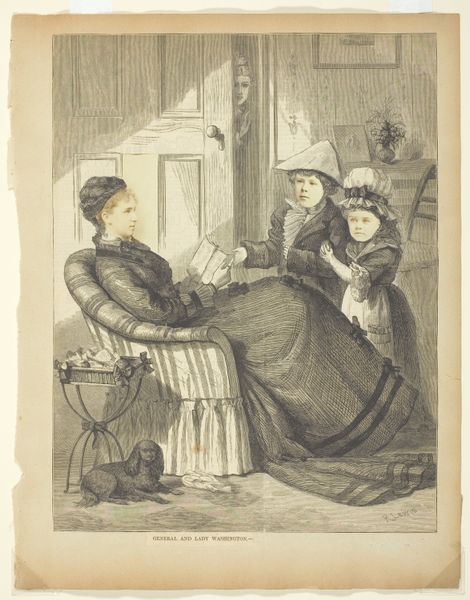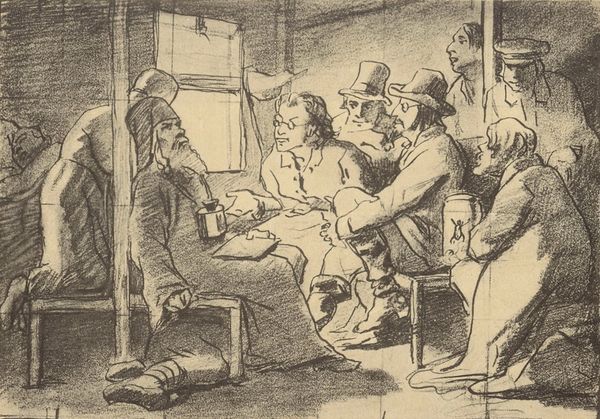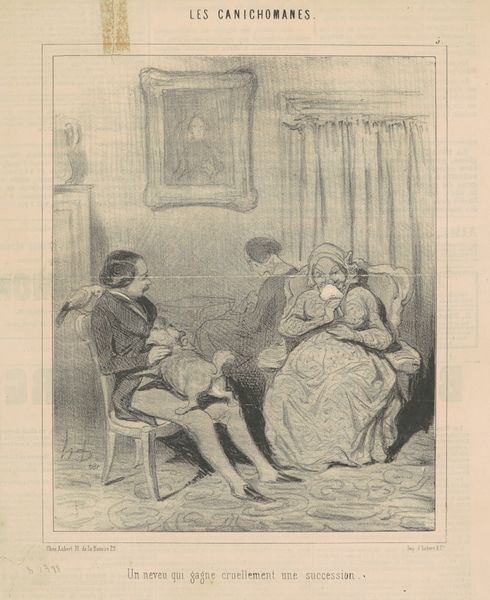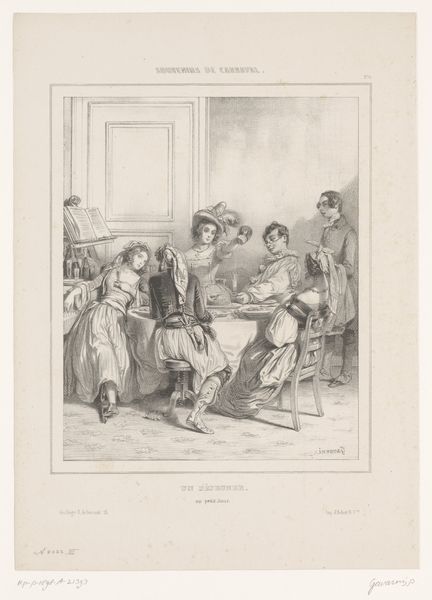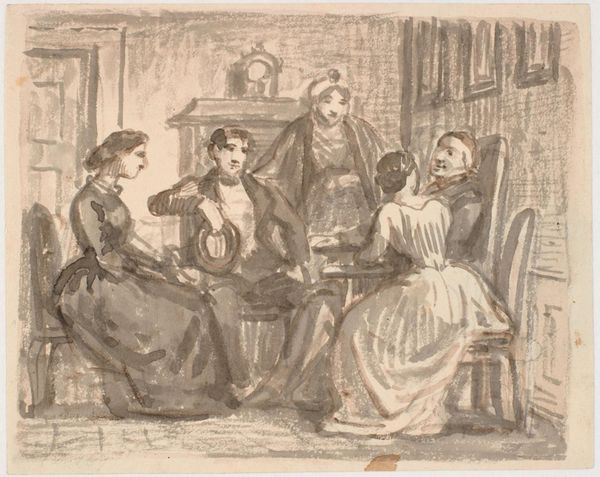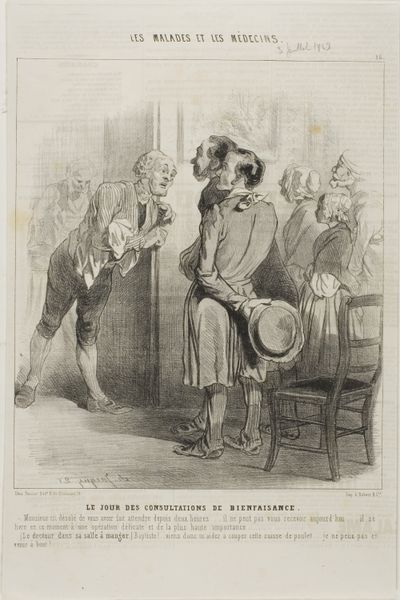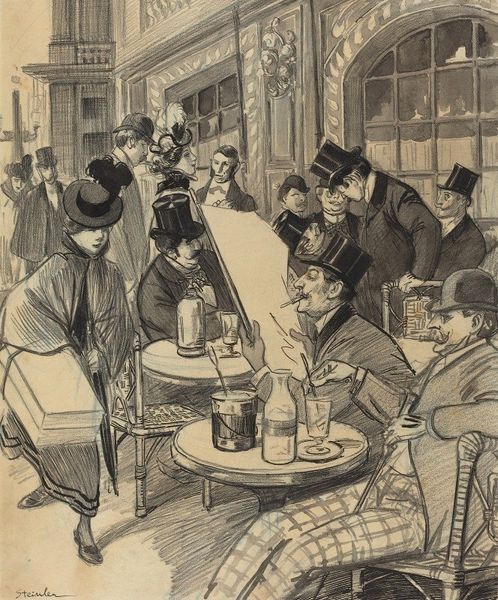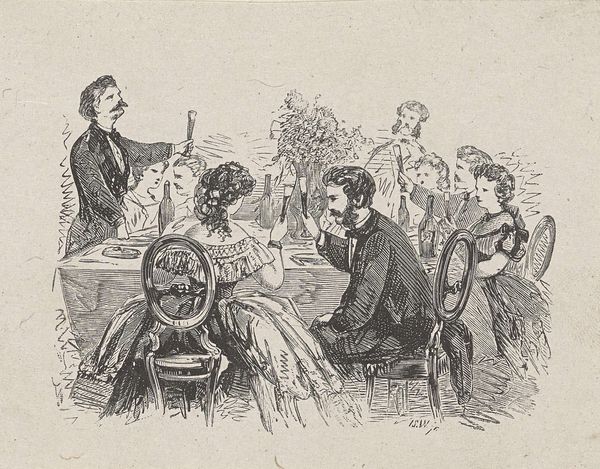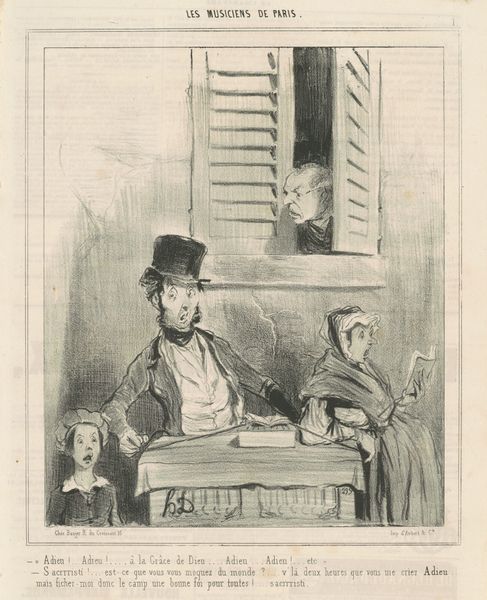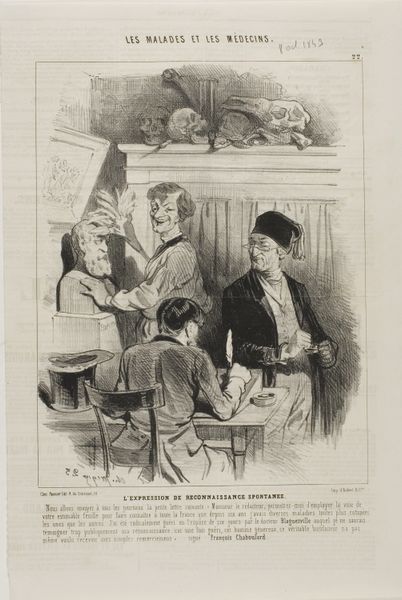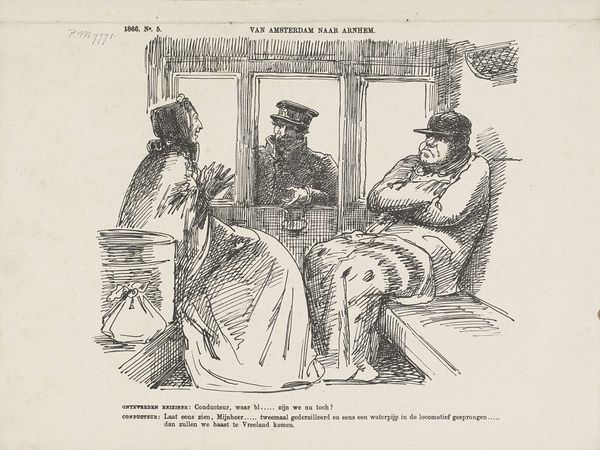
Dimensions: height 320 mm, width 240 mm
Copyright: Rijks Museum: Open Domain
Editor: So, this drawing is called "De Guldenstrein" by Alfred Ronner, made in 1893 using ink on paper. It depicts a group of people inside what appears to be a train carriage. I find the composition fascinating – it feels very cramped and full. What strikes you when you look at it? Curator: As a materialist, what immediately grabs my attention is the production of this image itself. Think about the relative accessibility of ink and paper in 1893. This isn't some grand oil painting meant for a palace; it's a reproducible drawing. Who was Ronner making this for, and how would they have consumed it? Was it meant for a newspaper, a magazine, or a relatively inexpensive print? This impacts our understanding greatly. Editor: That’s an interesting point. I hadn’t thought about its potential for mass production. How does the choice of materials influence the narrative here? Curator: Well, ink allows for sharp lines and intricate detail, perfect for capturing the textures of clothing and the expressions of these figures, but it also makes me consider the division of labor inherent in image making at that time. How were the paper and ink sourced? What sort of industry facilitated its creation? How do you think the emerging railroad, visible only as the implied space around these figures, relates to new modes of production and consumption? Editor: That connection to the industrial revolution and accessibility of resources definitely shifts my perception. Instead of a simple genre painting, it's starting to look like a commentary on society and the burgeoning middle class, who now have the leisure and means to travel, consume, and participate in image culture. Curator: Precisely. Seeing art as a product shaped by its historical means of production reveals layers we might otherwise miss. It allows us to question whose stories are being told and who gets to tell them through various materials available to them. Editor: I see. Looking at it this way makes me realize how much the social context influenced both the artwork's subject matter and the way it was created. Curator: Exactly, by examining the materials and means of production, we start to understand art's deeper connections to social and economic systems of its time. Hopefully you see it in ways you didn’t consider before.
Comments
No comments
Be the first to comment and join the conversation on the ultimate creative platform.
